
Cuzco, Cusco: Ancient Capital of the
Inca Empire
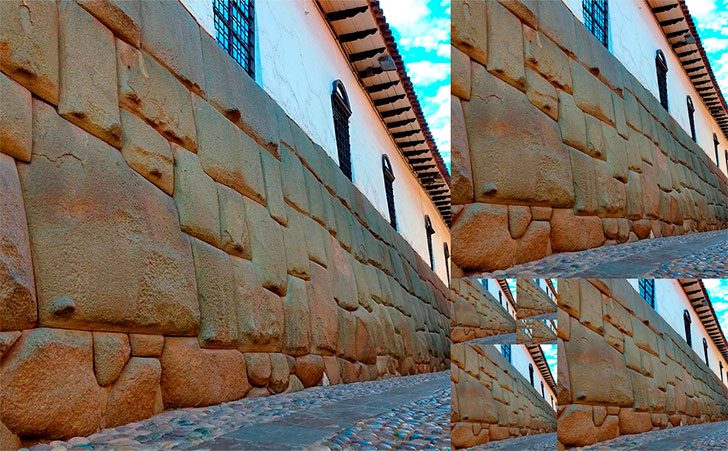
Harmonizing Hatun Rumiyoc Street in Cuzco: Revealing Symphonic Geometry, Golden Rectangles, and Spirals Around the Twelve-Angled Stone
Incan glory shines,
Cuzco, ancient empire's heart,
Sacred walls whisper.
Preserving history's tale,
Inca spirit lives on trail.
|
|
Cuzco (Cusco) is located at
11,200 ft. above sea level in the Andes Mountains in Southern
Peru. According to Inca legend, the city was founded in the 12th
century by the first Inca named Manco Capac, who was said to be
the son of the sun. Archeologists believe the city was
originally settled earlier by the Wari people, perhaps as long
ago as the 8th century.
Four archaeological sites that
surround Cuzco:
-
Sacsayhuaman Fortress, amazing and huge stone
construction, this place has a great cosmic energy: that
is why people think it was an astronomic observatory and
an Inca oracle.
-
Q’enqo, a place that was
used for worship and ceremonial center.
-
Puca Pucara,
a small red fortress
-
Tambomachay
or the Inca�s bath, spring of crystalline water
"Few places on earth are as
beautiful as the Peruvian Highlands. Arriving by dawn at Cuzco,
the whitewashed town pulses into a golden light. It feels as if
the sun is like a heart, filling the ancient Inca capital with
life. The serrated brown hills around disgorge ruins. Yet while
their monuments are everywhere, the vision of the people who
built them is more difficult to grasp. However, such ancient
sites are capable of reminding us of the diversity of human
understanding." Toby Green.
See also:
Cuzco Panorama View,
Cuzco Interactive
Map.
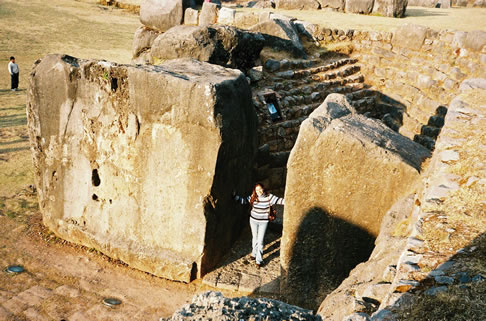
See:
The
Stone of twelve angles Puzzle: 22
pieces polygons.
|
|
|
|
The Stone of Twelve Angles. The palace Hatunrumiyoc was
built by Inca Sinchi Roca, the most important thing about this
palace is the Lienzo p�treo which is a beautiful wall which
bends backwards, built out of dorita verde or green stone, here
you will find the famous Stone of Twelve Angles. The
palace was destroyed and the only part that remains
perfect is this geometric wall.
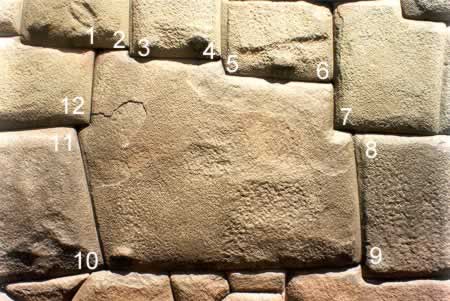
See:
The
Stone of twelve angles Puzzle: 22
pieces polygons.
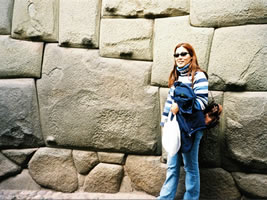
|
|
|
|
Road
Systems. Four major roads led out
from Cuzco and formed a network, which led to all near and
distant territories of the Empire.
Inca
roads were vital for the empire's existence. They were set up
very intricately. Information and provisions moved quickly
along to other communities. In fact there was little risk
for hunger because of these road systems.
The
Inca trail to Machu Picchu is rated as one of the
best trekking trails in the world offering stunning landscapes
and ancient ruins with diverse ecology.
|
|
|
|
Illustrations from 1615 by
The "Indian Chronicler" Felipe Guaman
Poma de Ayala about Cuzco.
Finding his most persuasive medium to be the visual image,
he organizes his 1200-page Nueva cor�nica y buen gobierno
(New Chronicle and Good Government) around his 398
pen-and-ink drawings, all skillfully executed by his own hand.
For the archaeologist, Guaman Poma's drawings of native life
under the Incas are like photographs of the past.
| |
|
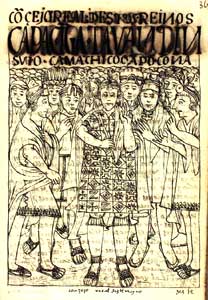
Royal council of these kingdoms, Qhapaq Inka
Tawantin Suyu kamachikuq apukuna, the Inka
lords who govern Tawantinsuyu. |
|
|
|
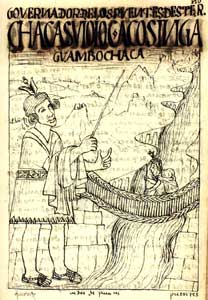
Governor of
the bridges of this kingdom, chaka suyuyuq.
|
|
|
| |
| |
|
|
| |
|
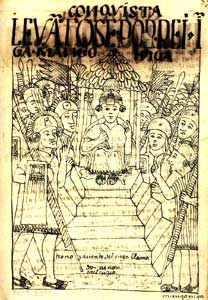
The newly
reigning Manco Inka in his ceremonial throne in Cuzco. |
|
|
|
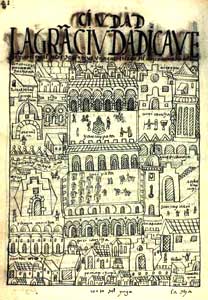
The city of
Cuzco, principal city and royal court of the twelve Inka
kings of this realm, and bishopric of the church. |
|
|
|
Reference:
Guaman Poma - 'El primer Nueva cor�nica y buen gobierno'.
Post a comment
|
|
|
|